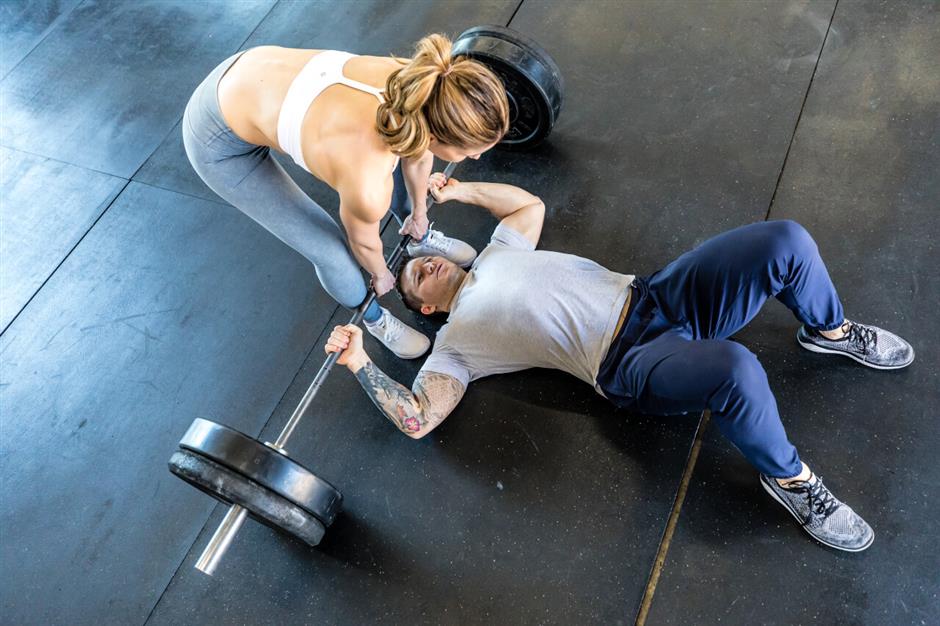
Would you love to become an online nutrition coach?
Imagine it: you’d create your own schedule and work from anywhere—all while making a huge impact on people’s lives!
For once, this is not too good to be true. Being a nutrition coach is a fulfilling and meaningful career that will get you excited to jump out of bed each morning.
And maybe you can visualize your life as a nutrition coach, but a knot builds in your stomach as you wonder, “How do I get there?”
The most common worry we hear from prospective nutrition coaches is that they lack confidence in their ability to get clients.
Advertisement
Today I am going to write about one of the new strategies we’ve used at Working Against Gravity to get new clients: hosting a health challenge!
Keep reading and I’ll fill you in on the why, what, who, how and more. I won’t hold back any information!
Before I do that, I recommend checking out a blog I wrote previously laying out some initial ways for you to find clients. That blog goes into detail on:
- Sharing your story
- Using your network
- Speaking to someone specific
- Hosting a workshop
- Consultation calls
Make sure you read that blog before diving into this one!
Okay, here’s everything you need to know about running a health challenge.
Advertisement
Why should you run a health challenge?
I am sure it comes as no surprise to you that in the health and fitness world, people love challenges!
Health challenges give participants the opportunity to focus on something daily (or whatever frequency you decide is best for you). It gives people a ‘taste’ of what you are all about.
It also offers a low-barrier for entry (many challenges involve a low fee or are free). People also understand that challenges have ‘start’ and ‘end’ dates, so making the commitment to participate isn’t scary. This means you’ll likely get a higher level of opt-in when compared to services with more expensive or longer-lasting commitments.
What we love most about health challenges is the way they bring communities together. Healtth challenges involve a larger group of people consuming the same content and working on similar goals all at the same time. This provides a huge opportunity to create connections among members of the community.
At the end of the challenge, you can provide more information to people who are interested in your other offerings. You may even consider offering a discount to those who participated in the challenge. The individuals who make it all the way through to the final day of the challenge are invested. They’ve “bought in” and very likely want some way to stay connected to you.
Advertisement
Once your health challenge is built, launched and implemented, the amazing thing is—you can do it all over again! You can continue to use the challenge content for the lifetime of your business to find new clients. We suggest that you collect feedback each time you launch the challenge and use it to tweak your content and the overall experience. This will ensure it’s even more valuable with every launch.
What does a health challenge actually look like?
We ran a health challenge called the WAG Wellness Challenge.
We offered this in response to the COVID-19 pandemic, and it turned out to be far more successful that we had ever hoped.
We ended up with 1,043 people joining the challenge, and the engagement was through-the-roof!
Here are a few testimonials from people that participated:
Advertisement
“Even though I was aware of the benefits of good sleep, recovery and stress management, going through each of them more in depth helped me realize HOW important these are. It also gave me that final "push" to do something about them. The way each aspect was broken down helped me see that they can be incorporated into my daily life in a manageable way, without feeling overwhelmed and not knowing where to start.” – Michelle
“...I loved the group feeling. I'm in the middle of nowhere in Bavaria and it's really hard to "find" people who are so into nutrition and sport. Loved the support and inspiration from the group.” – Jacky
“It’s one thing to think about something in your head but the act of writing it down seems more real. It feels like an actual commitment to yourself when it is down on paper.” – Jenny F.
Our goal with the challenge (and this should be your goal, too) was to provide people with value. We wanted to offer resources, support, education and community (the ‘community’ part was essential, as the world was in isolation).
A health challenge can have the same impact, however, regardless of whether you’re living in a pandemic or not. This is your opportunity to give people your best stuff. Don’t hold back! The more you give, the more you’ll get in return.
Advertisement
You can create two kinds of challenges:
1. Hard Challenge
- A healtth challenge aiming for specific results within a set period of time
- Examples: “Lose 5 Pounds in 5 Days”, “Get Abs in 30 Days”
2. Soft Challenge
- A healtth challenge that aims to educate and inspire over a period of time
- Example: “Understanding Macros Health Challenge”
What felt more aligned for us was a soft challenge—one that educated people about nutrition, fitness and mindset while in isolation.I’ll go into more detail below on exactly what we included in our challenge and how we executed it.
The WAG Wellness Challenge involved:
Advertisement
- 14 days of content
- All challenge participants started on the same day
- Registration closed after day 1 so we could keep everyone on pace
- Action step each day
- The action step always included sharing within the communities we created (we used Facebook)
- Downloadable infographics and PDFs
- Facebook Community
- Five Zoom Calls
Who should participate in a health challenge?
Our challenge was free for all members of the WAG community (including current members, members of our affiliates, affiliates and their coaches). We offered the challenge to everyone else for a small fee ($50).
For anyone who paid $50 for the Wellness Challenge, we allowed them to use the fee as a credit towards a WAG membership. All they had to do was forward their receipt to our administrator, and we honored the credit.
If you already have clients working with you, allowing them to join brings a boost of energy into the group that likely wouldn’t exist among people who don’t know you very well quite yet. Current members tend to be more active, sing your praises, already have a basic understanding of what you teach, and help you support the rookies.
How did we get 1,043 people to opt-in? I will list all the actions we took below. Not all of them will be relevant to you, and that’s okay. Pick and choose among them, but also don’t forget that you don’t need a thousand people to join your challenge to get new clients. You only need a handful of people who are interested, get value from your challenge, and convert in the end. They will, in turn, tell their friends about your services—and that is how your business will grow!
Here are the action we took to invite members to our Wellness Challenge:
Advertisement
- Instagram posts in the feed and the story
- Instagram Story question-and-answer sessions
- Emails to our list
- Facebook posts in our groups
- Facebook posts from our page
- Blog posts
- Changed the banner on our website (top of the main page) to information about the challenge with an easy & clear opt-in option
One important thing to note is that we launched our Challenge with a “pre-launch”—meaning we collected the emails of interested people before they could actually purchase the Challenge itself. This helped us build up hype and excitement (as well as collect leads for the future).
How do you execute a health challenge?
How did we actually execute the health challenge? This is the real magic and it’s why our Challenge ended up being so successful.
The software
We housed the health challenge within the Kajabi platform which allows users to build content as well as upload videos, PDFs and all sorts of other cool things. Within Kajabi, you can build landing pages, collect leads, and send out reminder emails to participants. The software is beautiful and simple to use. Many other similar platforms exist with functionalities that might suit your needs better—this is just what we decided to use.
The content
Advertisement
The content we provided on each of the 14 days was brief, to-the-point, and informative. Each day of content concluded with an action step that asked participants to make some moves. They were prompted to share their insights and reflections within the Facebook group as well as on our live Zoom calls (more on these below).
The community
All members of the Challenge were invited to join a private Facebook group. Entry to the group closed as soon as registration was complete because we wanted everyone to follow the Challenge together.
Ahead of time, we planned daily posts for the Challenge Facebook group. The post content included:
- A summary of the lesson from that day
- A cute or funny way to boost engagement
- Example: “Post a GIF describing how you are feeling!”
- Reminders about Zoom calls or other announcements
- Our own responses to the action step for that day
Planning these posts ahead of time made easy for us to stick to a schedule, keep the Facebook group engaged and boost participation. We highly recommend this because it might be difficult to keep up with daily posts during your own challenge.
Advertisement
Zoom calls
Over the 14-day span of the health challenge, we hosted five Zoom calls for anyone interested. These calls were absolutely amazing! It was so special connect with participants “face-to-face”. It gave participants an opportunity to get to know us and see our personalities. Overall, the calls gave everyone a sense that we were “in it together”.
Below, I will give you a sample agenda to use during your own live calls (go ahead and tweak it to your liking!).
Opening
- Welcome and say hello
- Wait about 3 minutes for last-minute stragglers
- If this is the first call, acknowledge everyone. Ask (by a show of hands) who is a new member, long-time member, etc.
- Acknowledge new faces. If you don’t know who is new, try asking, “Who has been on this call before?” or “Who is here for the first time?”
- You can also ask questions like:
“Type in the chat how long you have been part of the program.”
“Type in the chat where you are from.”
- State the purpose of the calls
- Introduce group rules
- Our rules included:
- Group safety
- Encouraging participants to be brave and share
- The logistics of working with Zoom (for example, “Have your camera on”, “Use gallery view”, “Use the raise-hand function”, etc.)
- No ‘cross-coaching’ allowed (by this we mean: just listen without trying to ‘coach’ participants in the group)
Content
Advertisement
- Topic of the call
- The content for our calls was based on that day’s health challenge content. We went over the lesson and expanded on it.
- We talked about what we’d taken away from the lesson and our personal action steps (after all, we were in the health challenge with them, too!)
- Pose a question/prompt to the group
- Each day of the health challenge came with a set of questions for participants to answer. We asked people to share their responses with the group.
- If you have multiple “pages” of people in the call, you can use the ‘Raise Hand’ Zoom function
- Tip: leaders should always share first to set the tone!
- Members ask questions and ask for support or resources
- This is a time for participants to bring up something they are struggling with or a burning question (or something they discovered that has been helping them!)
- Leaders can respond or utilize the group as a whole.
- Example: A participant is having an issue with their teenage daughter or son, and the leader does not have children. In this case, they might look towards the group for support/resources.
- Try using the “Breakout Groups” Zoom feature (*best for groups of 10 or more participants)
- Click here to watch a tutorial on Breakout Groups
- Breakout groups allow everyone to answer the posed question or prompt within their smaller groups. It encourages people to talk to each other rather than just the leaders.
- To improve effectiveness of breakout groups:
- Tell participants how much time they will have per person and suggest they begin thinking about who will be the “timer”
- Try saying: “I am about to put you in your groups. Before I do, I want you to think about whether you can step up and be the timer for your group when you get there.”
- Help them decide the order of their group
- Example: “The person with the longest hair goes first”
- If you want each group to share something when they return to the main group, tell them this before you split up.
- Example: “As a group, you will nominate one person to share their answer with the group.”
- Group shares
- After everyone returns from the breakout groups, you can ask each group to share.
- Ask people to share what they learned, enjoyed, or experienced in the groups.
Closing
- Everyone returns as a big group
- Try adding a “state change” to bring the energy up for the end of the call. Some examples:
- 10 jumping jacks
- Stretches
- Stand up and shake it out
- Dance break! (Tip: Make sure you “Share computer audio”. Here is a tutorial on how to do this)
- Ask for any last-minute shares or comments
- Examples: “What is one takeaway from this call?” or “Was there an ‘a-ha!’ moment for you in this call?”
Sign Off
- Remind participants of the next call date and time
- Sign off with something that gets everyone involved
- Example: Unmute all participants so everyone can say goodbye at the same time.
Tips for great Zoom calls:
- Explain to the group why you chose the question, theme, or exercise that you did. What do you want them to get out of it?
- Leaders should go first. Be the first to answer questions, provide examples, and most importantly—go deep! The leader sets the standard for how deep the rest of the group can go.
- Awkward silence is okay!
When asking for a share, participants may take a few seconds before speaking up. They might be thinking or waiting for others to volunteer. Pause for a few seconds longer than you are comfortable with before you fill the silence.
If no one volunteers to share, leaders should call on someone and ask them to share (but remind them that they can pass! And remind them this is a time to be brave). Notice if you start getting “regulars” who share all the time and call on people who are less likely to share.
Advertisement
So, what were our results?
The Wellness Challenge gave us the chance to expose our company culture, philosophies and content to hundreds of people who may have never heard of us (many of the 1,000+ participants were already members). It also gave our current members something additional to be a part of, and it led them to stay with us for longer.
We got many new clients who loved the Challenge and wanted to continue their relationship with us. We also got “buzz” on social media as people shared information about the Challenge on social platforms. We now have a ready-to-go piece of content that we can use in the future to introduce people to our program and offer them value.
If you have never considered it before, I hope that you can now see how hosting or facilitating a health challenge for your community can be an amazing experience and an opportunity to find more clients for your business!
If you enjoyed this information, you’ll love our WAG Coach Nutrition Certification Program. Becoming a coach will allow you to help countless people lead their healthiest possible lives. And it gives you control over your own work schedule—you can decide when, where, and how much you want to work.
Get a WAG Coach
Working Against Gravity has led the macro tracking and health space for over a decade. Our team doesn’t just understand the science of nutrition—we’ve spent years mastering the art of tailoring it to fit your life. That means no cookie-cutter plans, just real strategies that have worked for over 30,000 people.
Choose from our membership options and start working with an expert 1-on-1 coach today.



